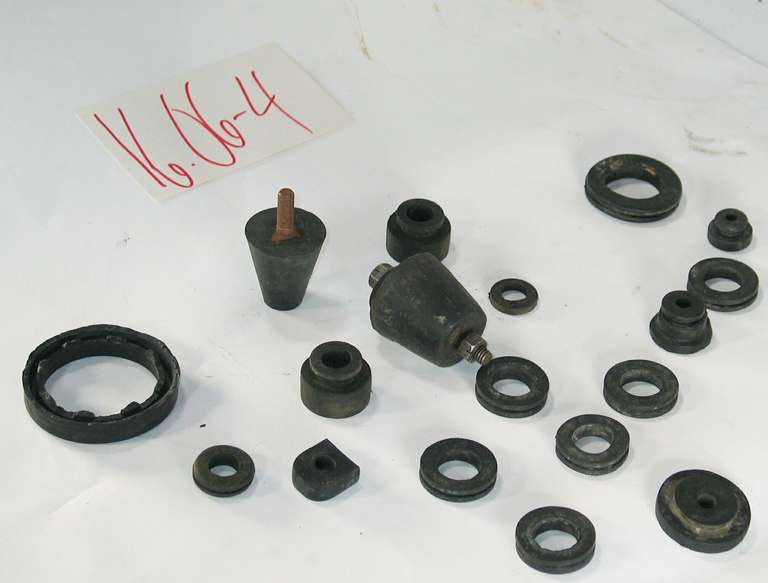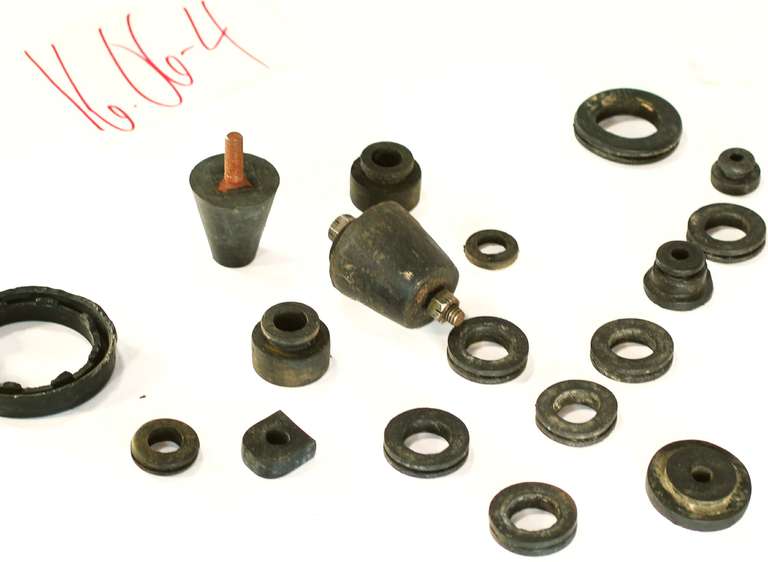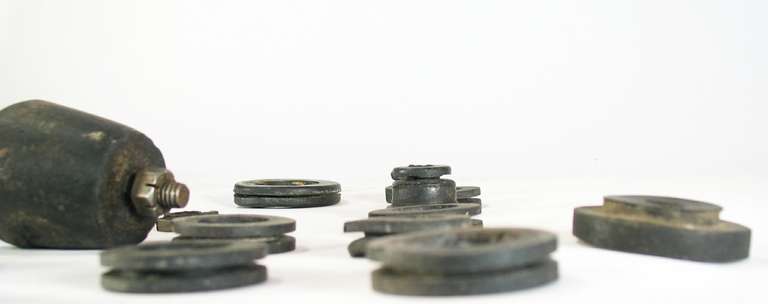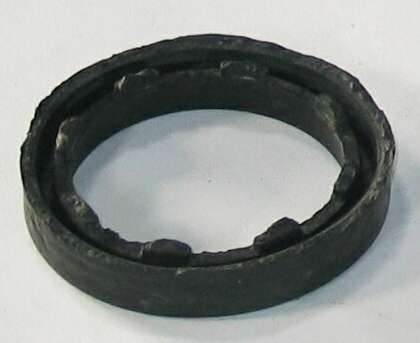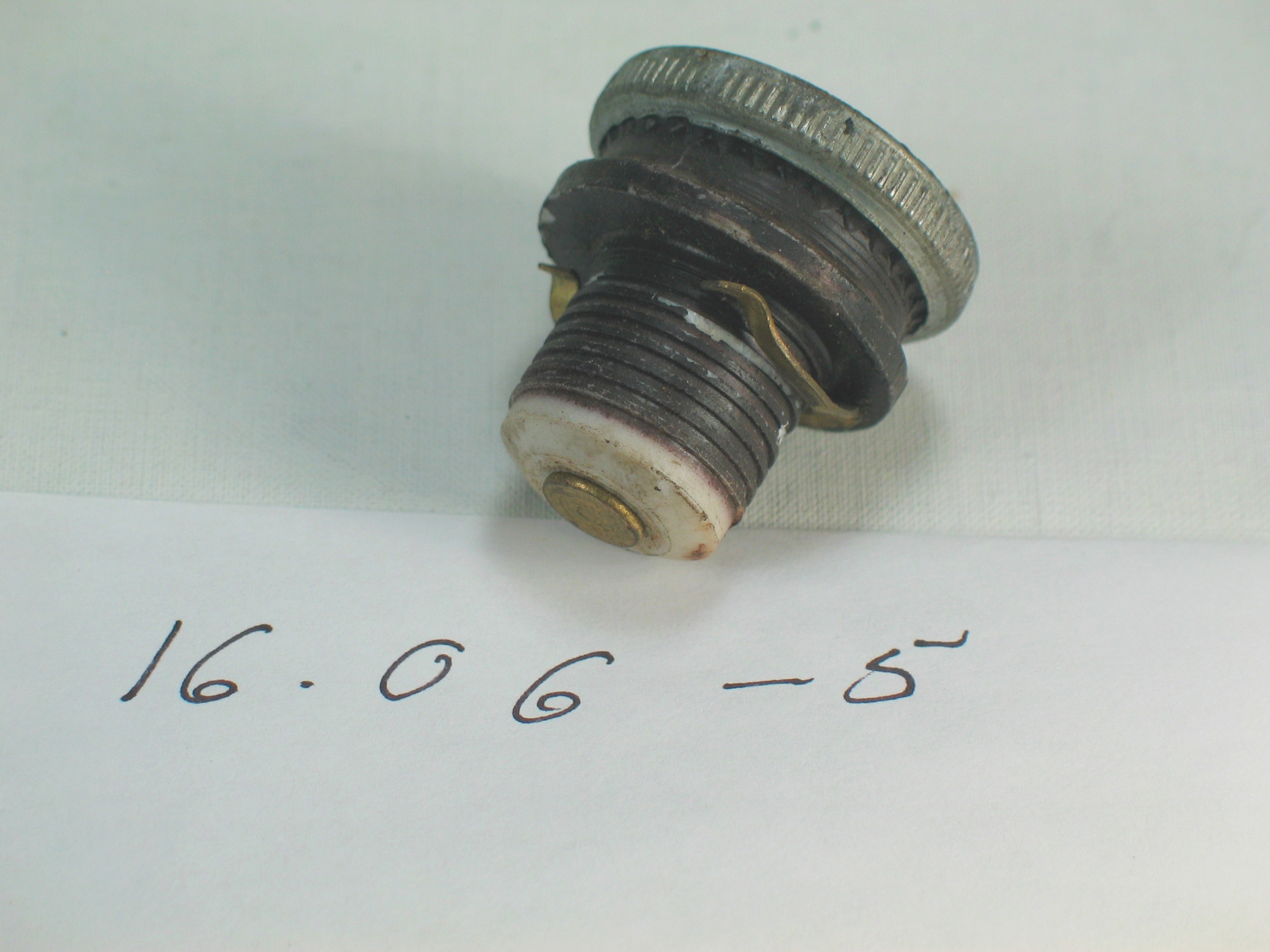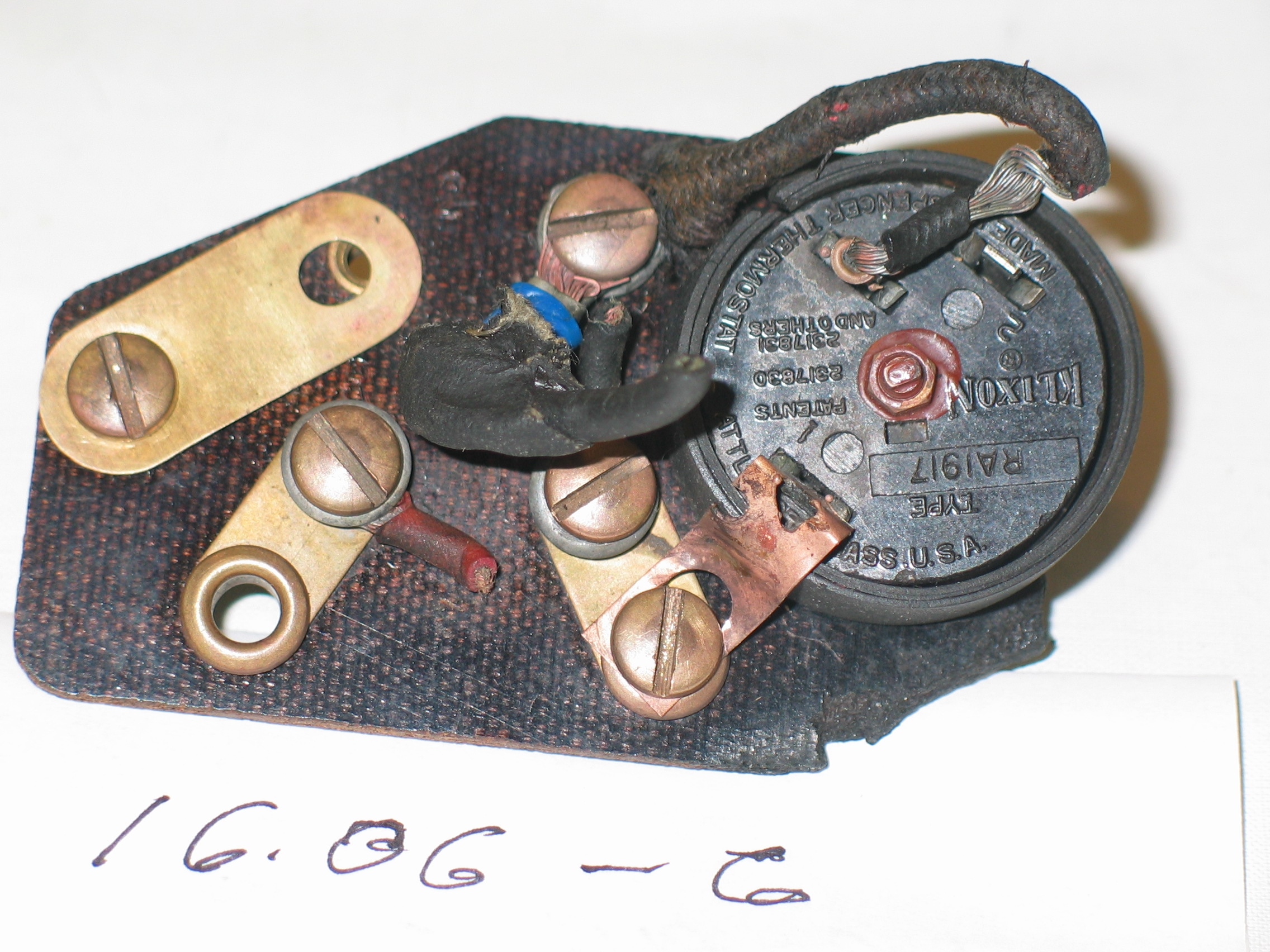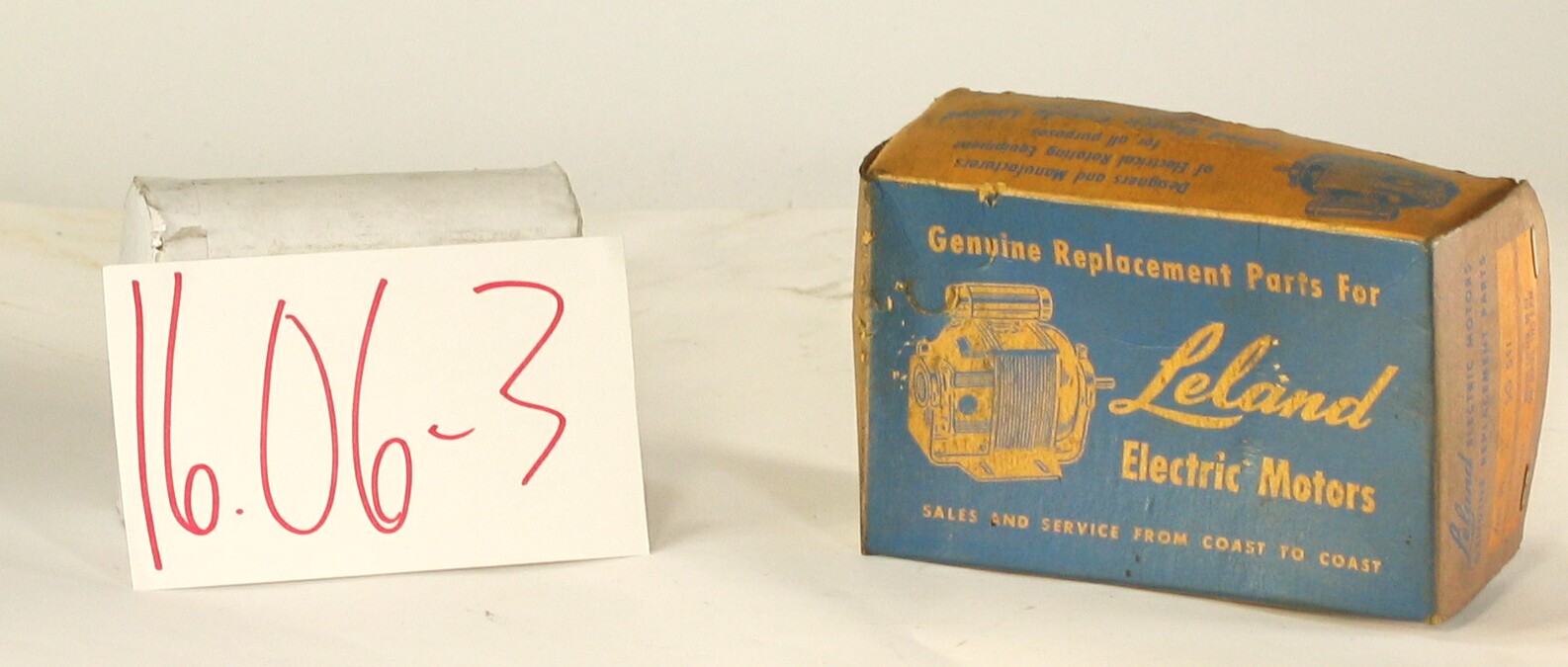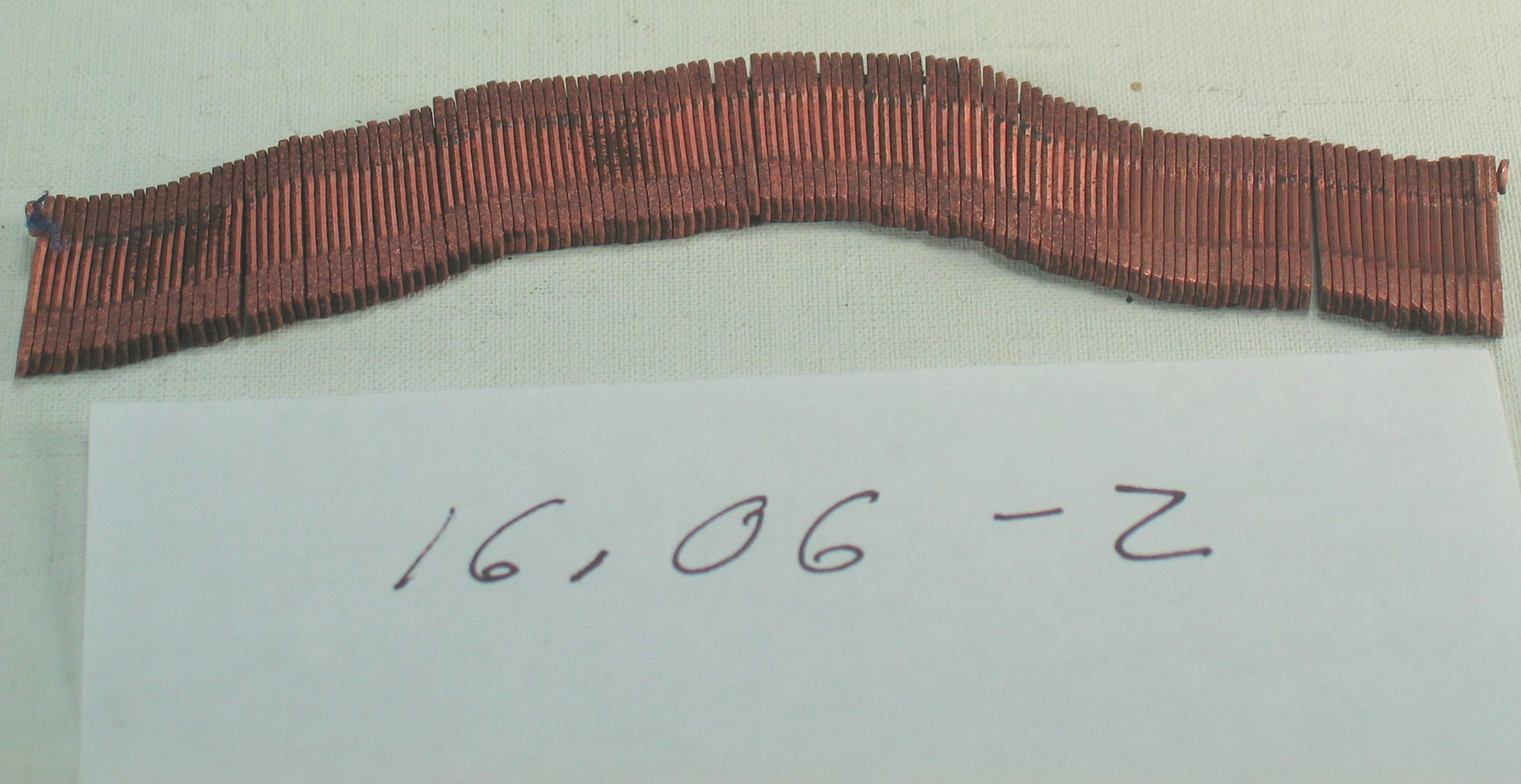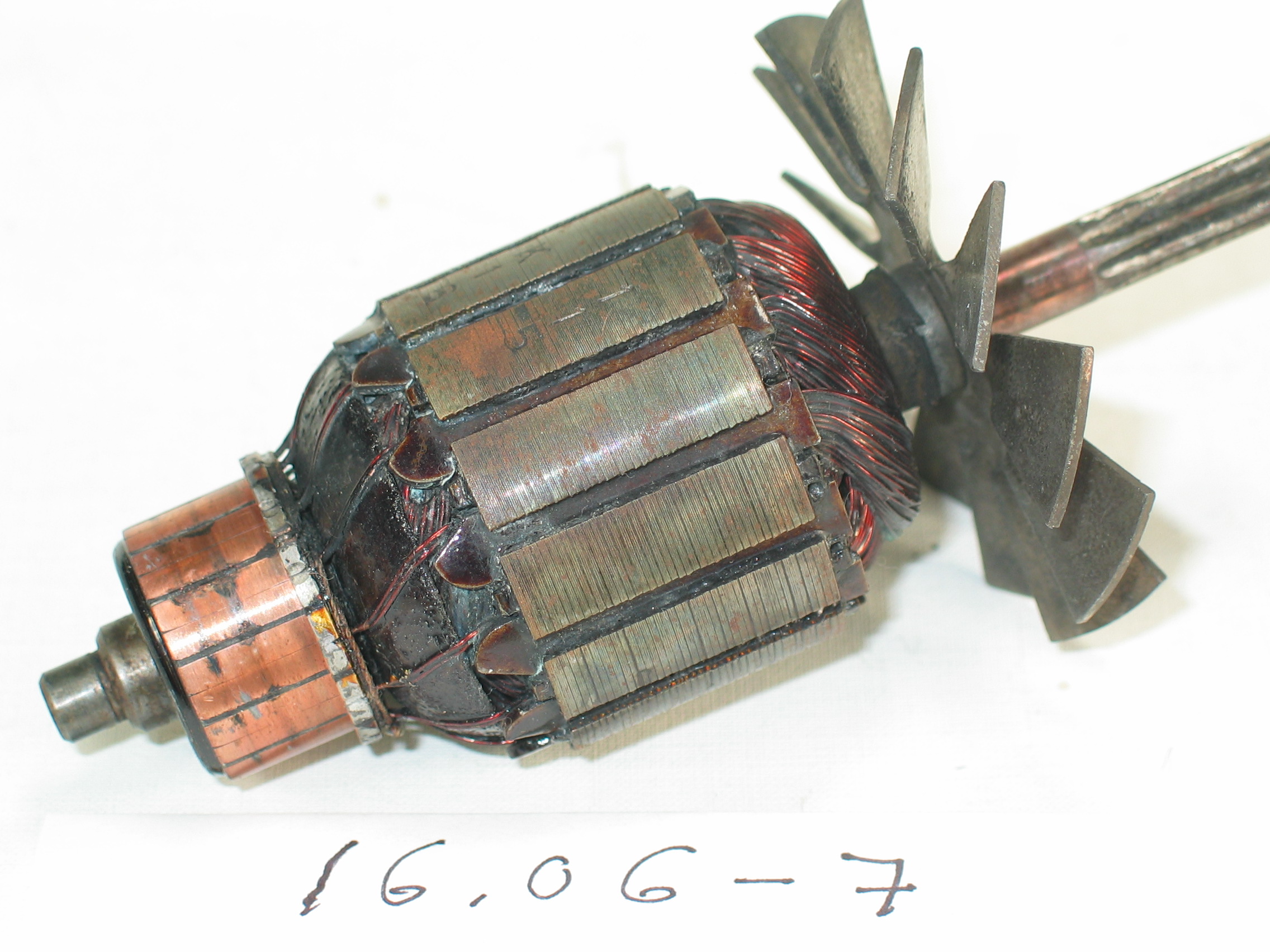16.06-4: 1948 Rubber Mountings for Vibration Isolating
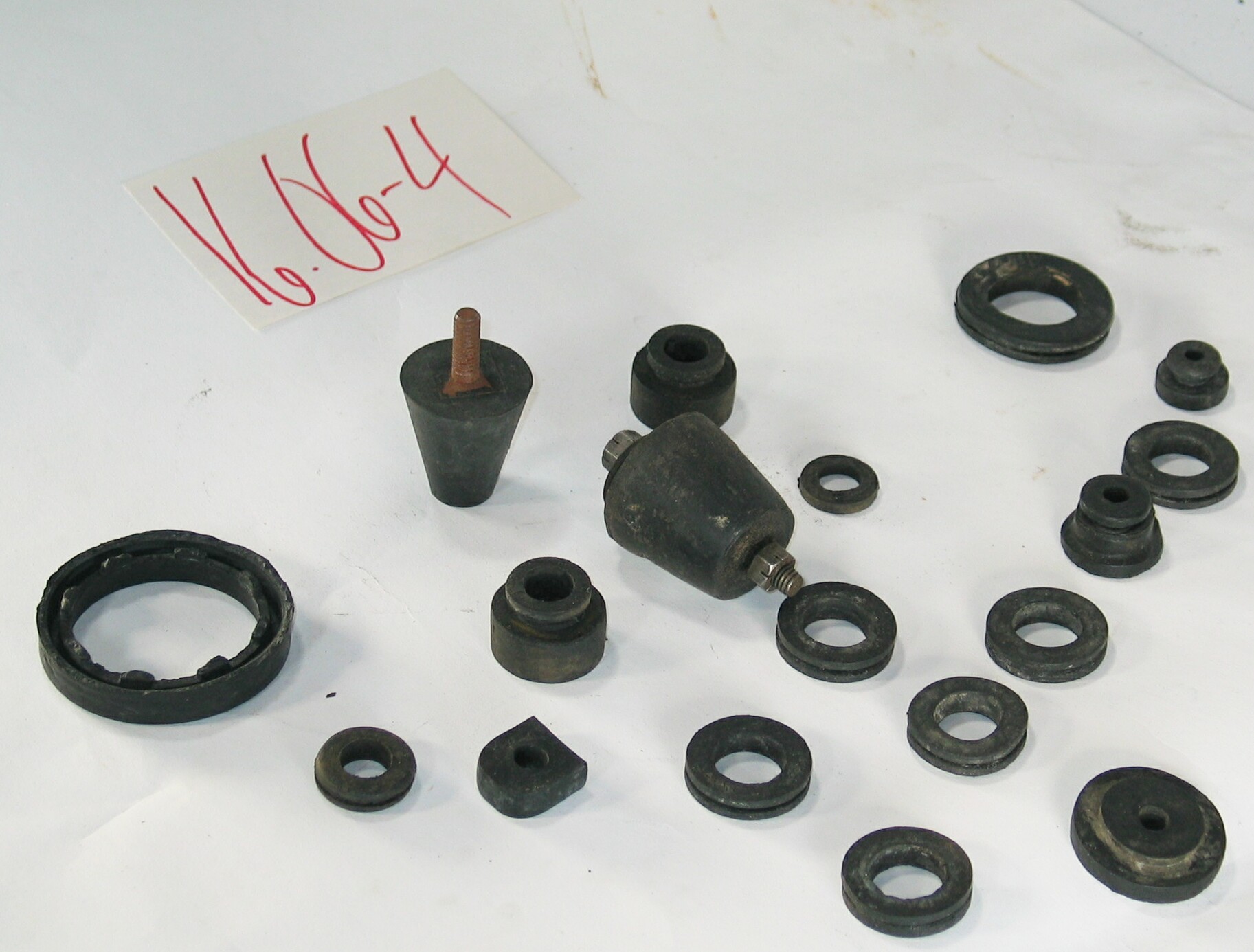
| HHCC Accession No. 2006.205 | HHCC Classification Code: 16.06-4 |
|---|
Description:
A collection of rubber mountings for vibration isolating, and quieting of electro-motive equipment. The 13 varieties included are representative of the proliferation and diversity of innovative solutions devised by the middle of the 20th century. Vibration and sound control quickly emerged as a critical engineering requirement for the wide spread acceptance of electro-motive technology by Canadian homes and places of business, manufacturers unknown, Circa 1948.
Group:
16.06 Electric Motors - Components and Parts
Make:
Unknown
Manufacturer:
Unknown
Model:
Serial No.:
Size:
Various sizes
Weight:
8 0zs.
Circa:
1948
Rating:
Exhibit, education, and research quality, illustrating the proliferation and diversity of innovative solutions to the isolation of vibration and quieting of electro-motive technology by the middle of the 20th century.
Patent Date/Number:
Provenance:
From York County (York Region) Ontario, once rich agricultural hinterlands, attracting early settlement in the last years of the 18th century. Located on the north slopes of the Oak Ridges Moraine, within 20 miles of Toronto, the County would also attract early ex-urban development, to be come a wealthy market place for the emerging household and consumer technologies of the early and mid 20th century.
This artifact was discovered in the 1950’s in the used stock of T. H. Oliver, Refrigeration and Electric Sales and Service, Aurora, Ontario, an early worker in the field of agricultural, industrial and consumer technology.
Type and Design:
Various configurations designed to meet the unique needs of original equipment manufacturers of FHP electric motors and related motive powered equipment for home and business.
Construction:
Material:
Special Features:
Accessories:
Capacities:
Performance Characteristics:
Operation:
Control and Regulation:
Targeted Market Segment:
Consumer Acceptance:
Merchandising:
Market Price:
Technological Significance:
This collection of rubber mountings [13 varieties represented] stand as a marker of the proliferation and diversity of innovative, engineering solutions devised by the middle of the 20th century, for vibration isolating, and quieting of electric motive equipment targeted for Canadian homes and places of business. The collection speaks to the chemistry of rubbers in a period in which natural rubbers were scarce, as a result of WWII, and synthetic rubbers, the new marvel of organic chemistry of the times, were still in their infancy. Of particular engineering concern was the development of a rubber that would withstand the effects of oil. The specimens included here suggest that oil resistant rubber compounds had been developed with a reasonable life expectancy.
Industrial Significance:
Moving electro motive equipment into the Canadian home brought with it many engineering challenges, not the least of which was the matter of vibration isolating, and quieting. So long as motive equipment remained in an industrial setting noise and vibration were of relatively minor engineering concerns, functionality being the prime consideration. This was no longer a reasonable working assumption for electric motors and appliances intended for the home and business environment. The proliferation of solutions speaks to the efforts made moving to reduce noise and vibration, a basic prerequisite to the wide spread adoption of electro-motive powered technologies such as automatic heating, refrigeration and other home, laundry and kitchen appliances. The movement of the refrigeration industry to hermetic sealed motor and compressor in a single integrated assembly would reduce the need for such external mountings. The proliferation of different mountings by different equipment manufacturers would be a challenge to the serviceman, in maintaining a stock of replacement mountings, many with a relatively short operating life expectancy due to the deteriorating effects of oil.
Socio-economic Significance:
Socio-cultural Significance:
Moving the ‘engines of industry’ in the home and places of business started with the ear-splitting noise of the internal combustion engine. By the 1920’s the principle cultural images in North America were said to be those of the engine and the mechanization that ensued. The engine had, in fact, become, in the dominant popular view, the ‘engine of progress’. It was seen everywhere, on the farm, in industry, in the shop, on the road and then, in a manner once thought not possible, in the home. A standard Canadian engineering text reported in 1946 that: ‘Ceaseless change is the keynote of the machine age and society’.Machine civilization ‘.differs from others in that it is dynamic, containing within itself the seeds of constant reconstruction’’ The authors go on to note: ‘But machine civilization based on technology, science, invention, and expanding markets must of necessity change ‘ and rapidly. The order of steam is hardly established before electricity invades it; electricity hardly gains a fair start before the internal combustion engine overtakes it.’ See reference 11 Not-with-standing a major depression and two world wars the first half of the 20th century was a period of exceptional ferment in the development and popular dissemination of FHP electric motor technology. Associated with the development were a number of driving forces, mutually supporting and interacting: Scientifically, the theoretical ground work for development of an astonishing array of electrical and electro-magnet devices had been laid by the early years of the 20th century, through the efforts of Faraday and Steinnmetz, among many others, Technologically, the work of Thomas Edison, among others, laid the foundation stones on which urban and rural electrification would proceed, enabling an new era in human experience, favoured with consumer goods and services, previously unimagined,
Economically, a favourable climate for capital investment in manufacturing capacity, methods and materials emerged, part of North America’s second industrial revolution, Socially and culturally the consumer society was born, nurtured by a pent up demand for an easier, more comfortable, pleasurable lifestyle, and the sense that 20th century electrical and electro-motive technology might be able to help. The FHP electric motor, engineered for 110 volt, single-phase house current, revolutionized life in the Canadian home. It enabled an astonishing list of appliances and labour saving devices. The revolution would take place in an astonishingly short period of time - for much of urban Canada much less than a decade. The electro-mechanical mechanization of the Canadian home was accomplished for much of urban Canada by the late 1930’s. But the early 20th century wonders of household mechanization would be dependent, in turn, on household ‘electrification’ Between them electrification and electro-mechanical mechanization changed everything. Almost over night it altered what Canadians do in the course of their day, how they live and their expectations of what their world had in store for them - in labour saving devices, devices of convenience, health and safety. The fractional horsepower electric motor [FHP] became an ubiquitous part of the Canadian household by the mid 1930’s. Cyril Veinott reported, December 1938:
‘Practically every electrified home today makes use of one or more fractional horsepower motors. This kind of motor may be used in a washing machine, refrigerator, vacuum cleaner, clock, oil burner, hair drier, room heater, sewing machine, razor, health machine, fan, air conditioner, stoker, ironed, floor waxer, or food mixer. In industrial use, the number of useful tasks performed by fractional horsepower motors is legion. In the United States alone, the value of fractional horsepower motors sold amounts to approximately $50,000,000 annually.’ See reference #1
Similarly, more than half a decade earlier Daniel Braymer had commented on the proliferation of this mind and life changing technology for home electro-mechanization. He observed that what had made it all possible was the invention of single phase alternating current motor, in a number of subtypes, small quiet, self starting, reliable and affordable motors for the home, motors which were compatible with the rapid standardization of single phase, alternating current, electrical distribution systems then spreading across north America. See reference #2 Among the types of single phase alternating current motors which quickly populated the Canadian home were: repulsion induction [see Group 16.01] for heavy duty, high starting torque applications such as refrigeration appliances; capacitor start [see Group 16.02] for advanced high torque applications, requiring quiet operation; split Phase [see Group 16.04] for light duty low starting torque applications; and shaded pole [see Group 16.04] designs for small devices such electric fans.
Donor:
G. Leslie Oliver, The T. H. Oliver HVACR Collection
HHCC Storage Location:
Tracking:
Bibliographic References:
‘Fractional Horsepower Electric Motors’, Cyril Veinott, McGraw Hill New York, 1948 ‘Rewinding Small Motors’, Daniel Braymer and C.C. Roe, McGraw Hill, 1932 ‘A course in Electrical Engineering, Volume II, Alternating Current’, Chester Dawes, McGraw Hill, 1934, Starting single Phase Induction Motors, P. 362. ‘The Fractional Horsepower Motor and its Impact on Canadian Society and Culture’, G. Leslie Oliver, Material History Review, Vol. 43, Journal National Museum of Science and Technology, 1996.
Notes:
Contents, various rubber mountings:
16.06-4A 16.06-4B 16.06-4C 16.06-4D 16.06-4E 16.06-4F 16.06-4G 16.06-4H 16.06-4I ‘ Axial, torsion, vibration isolation and noise dampening motor mounting 16.06-4J 16.06-4K 16.06-4L 16.06-4M
